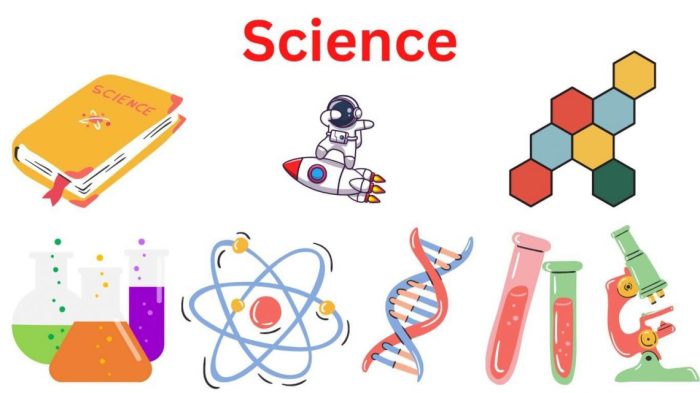Remember these 7 things when youre overwhelmed with hardship – Remember these 7 things when you’re overwhelmed with hardship. This post dives deep into understanding overwhelm, prioritizing during tough times, maintaining well-being, finding support, building resilience, taking action, and developing a growth mindset. It’s a comprehensive guide to navigating hardship with grace and strength.
Feeling overwhelmed by life’s challenges? This guide offers practical strategies to help you cope with hardship effectively. From identifying triggers to building resilience, we explore a range of techniques for managing difficult situations and maintaining your well-being.
Understanding Overwhelm
Feeling overwhelmed is a common human experience, a complex interplay of emotional, mental, and physical responses to perceived hardship. It’s not a sign of weakness but a signal that something needs attention. Recognizing the nuances of overwhelm allows us to address it effectively and regain a sense of control. Understanding the triggers and differentiating it from normal stress is crucial for developing coping mechanisms.Overwhelm manifests as a range of symptoms.
It’s not just about feeling stressed; it encompasses a feeling of being completely inundated, unable to cope, and often accompanied by a sense of powerlessness. This pervasive feeling can affect various aspects of life, impacting our ability to function effectively.
Emotional Symptoms of Overwhelm
Emotional symptoms of overwhelm often include feelings of anxiety, fear, sadness, anger, frustration, or hopelessness. These feelings can be intense and persistent, making it difficult to manage daily tasks. A loss of motivation, irritability, and difficulty concentrating can also be part of the emotional response to feeling overwhelmed. These emotional responses are often linked to the perceived inability to manage the situation.
Mental Symptoms of Overwhelm
Mental symptoms of overwhelm frequently include racing thoughts, difficulty concentrating, forgetfulness, and an inability to make decisions. This mental fog can significantly impact judgment and problem-solving abilities. A heightened sense of self-criticism and negative self-talk often accompanies feelings of overwhelm. These mental symptoms can create a vicious cycle, reinforcing feelings of inadequacy and powerlessness.
Physical Symptoms of Overwhelm
Physical symptoms of overwhelm can manifest in a variety of ways. These include headaches, muscle tension, fatigue, sleep disturbances, digestive issues, and a weakened immune system. Physical symptoms often arise as the body reacts to prolonged stress. Constant worry and stress can lead to these physical manifestations.
Remember these 7 things when you’re feeling overwhelmed by hardship? Taking care of your overall well-being is crucial, and that includes your physical health. Think about how important good foot care is for your overall mobility and comfort. For example, checking out best foot forward how caring for your feet will benefit your life to learn more about how proper foot care can positively impact your life.
This focus on physical health is just one piece of the puzzle when facing tough times, so keep these 7 strategies in mind to get through the challenges.
Identifying Triggers for Overwhelm
Recognizing the specific triggers for feeling overwhelmed is a vital step toward managing these feelings. Triggers can be external, such as demanding deadlines at work, or internal, such as unresolved personal conflicts. Sometimes, a combination of factors contributes to the feeling of overwhelm. A detailed self-assessment can help pinpoint these triggers. Keeping a journal can help track these triggers, leading to a better understanding of patterns and potential solutions.
Facing hardship? Remember those 7 things to get through it. Sometimes, when life’s challenges feel overwhelming, a change of scenery can be just what you need. Consider escaping to one of the world’s most exotic and best beaches, like those featured in worlds 25 most exotic and best beaches you can visit all year round.
But remember, even the most beautiful beaches won’t solve everything. Focus on those 7 things to navigate through the tough times, and you’ll find the strength you need.
Differentiating Normal Stress from Overwhelming Hardship
Normal stress is a natural response to challenges. It’s a temporary feeling that typically dissipates once the challenge is addressed. Overwhelming hardship, on the other hand, is a prolonged state of distress, often stemming from significant and persistent issues. The key difference lies in the duration and intensity of the feelings. Recognizing the difference is crucial for seeking appropriate support and developing effective coping strategies.
Comparing Types of Overwhelming Situations
| Type of Overwhelm | Characteristics | Examples |
|---|---|---|
| Financial Overwhelm | Feelings of inadequacy, anxiety about debt, lack of control over finances, difficulty meeting financial obligations. | High debt levels, unexpected expenses, job loss, inability to save. |
| Relationship Overwhelm | Conflicts, communication breakdowns, feelings of isolation, perceived lack of support, or significant relationship changes. | Ongoing arguments, infidelity, loss of a loved one, family issues, or changes in the dynamics of the relationship. |
| Health Overwhelm | Physical or mental health concerns that seem insurmountable, feelings of helplessness, lack of support, and overwhelming medical procedures. | Chronic illness, major surgery, significant health diagnoses, treatment challenges. |
This table provides a general overview. Each situation is unique and can present a complex array of factors contributing to feelings of overwhelm. Seeking professional help is often necessary to navigate these challenging situations.
Prioritizing in Times of Hardship
Navigating hardship often feels like treading water in a raging current. The sheer volume of challenges can feel overwhelming, making it difficult to know where to begin. Effective prioritization becomes crucial in these moments, helping us focus our energy and resources on what truly matters. This allows us to feel a sense of control and direction even when external circumstances feel out of our hands.Prioritizing isn’t just about making a to-do list; it’s about understanding the interconnectedness of tasks and responsibilities, and strategically allocating our time and energy in a way that best serves our well-being and goals.
This proactive approach empowers us to move forward even when faced with a multitude of obstacles.
Effective Methods for Prioritizing Tasks
Prioritization during hardship requires a shift in perspective. It’s not about completing everything on a list; it’s about making choices about what actions will bring the most meaningful progress. We must assess the urgency and importance of each task, recognizing that some tasks might be less critical in the short term. This allows us to focus on the tasks that directly address the root causes of the hardship or the tasks that will bring the greatest long-term benefits.
Step-by-Step Guide to Breaking Down Overwhelming Tasks
Breaking down large, overwhelming tasks into smaller, more manageable steps is a cornerstone of effective prioritization. This approach not only reduces the feeling of being overwhelmed but also fosters a sense of accomplishment as we complete each step.
- Identify the overall goal: Clearly define the ultimate objective for the task. This provides a framework for understanding the steps needed to achieve it.
- Break down the task: Decompose the task into smaller, concrete steps. Visualizing these steps helps create a sense of progress.
- Prioritize the steps: Order the steps based on their urgency and importance, considering dependencies between steps.
- Allocate time for each step: Estimate the time needed for each step, which helps in realistic time management.
- Set deadlines for each step: Creating deadlines provides structure and motivation to stay on track.
Importance of Setting Realistic Expectations and Boundaries
During challenging times, it’s crucial to set realistic expectations. Trying to do too much at once can lead to burnout and frustration. Recognizing personal limitations and setting healthy boundaries is vital for self-care and maintaining a sense of well-being.
Strategies for Delegating Tasks or Seeking Support
Recognizing when to delegate tasks or seek support is a critical skill in navigating hardship. It’s about acknowledging that you don’t have to shoulder everything alone. This empowers us to focus on our strengths and leverage the strengths of others.
- Identify tasks that can be delegated: Evaluate which tasks can be effectively delegated to others, such as family members, friends, or even professionals.
- Communicate needs and expectations clearly: Make sure those who are assisting understand the tasks and the desired outcome.
- Establish clear communication channels: Regular check-ins and feedback mechanisms are essential to ensure tasks are completed effectively.
- Seek support from friends, family, or professionals: Connecting with a support network can provide emotional and practical assistance.
Prioritization Techniques Table
This table illustrates different prioritization techniques and their application to various hardship situations.
| Prioritization Technique | Description | Example Hardship Situation | Application |
|---|---|---|---|
| Urgent/Important Matrix | Categorizes tasks based on urgency and importance. | Facing a medical emergency while dealing with a job loss. | Focus on the medical emergency first; the job loss can be addressed later. |
| Eisenhower Matrix | Categorizes tasks as urgent/important, important/not urgent, urgent/not important, or not urgent/not important. | A family member needing help with a project while managing a demanding work schedule. | Prioritize the family member’s needs as important but not urgent, and schedule time for the project later. |
| Pareto Principle (80/20 Rule) | Focuses on the 20% of tasks that yield 80% of results. | Overwhelmed by a large project at work. | Identify the critical 20% of tasks that will significantly impact the outcome and focus on those first. |
Maintaining Well-being During Hardship

Navigating challenging times often leaves us feeling overwhelmed and depleted. Maintaining well-being amidst hardship is crucial, not just for surviving the immediate difficulties, but for building resilience and fostering long-term mental health. This involves recognizing the importance of self-care, healthy coping mechanisms, and social support. Prioritizing these aspects allows us to navigate the storms of life with greater strength and clarity.Healthy coping mechanisms and self-care practices are not merely nice-to-haves; they are essential tools for navigating the emotional rollercoaster of hardship.
They provide a foundation for resilience and help us weather the storm with a greater sense of control and stability. By actively engaging in these practices, we can cultivate emotional strength and navigate challenges with greater ease.
Self-Care Practices for Maintaining Well-being
Self-care is not selfish; it’s essential for maintaining overall well-being, especially during times of hardship. These practices, when incorporated into daily routines, can significantly contribute to emotional regulation and stress reduction. Engaging in these activities helps build a strong foundation of emotional resilience, allowing you to navigate difficult situations more effectively.
- Mindfulness and Meditation: Practicing mindfulness and meditation can help ground you in the present moment, reducing anxiety and promoting a sense of calm. Regular mindfulness exercises, even for short durations, can cultivate a greater awareness of your thoughts and emotions, allowing you to manage them more effectively. Examples include guided meditations, deep breathing exercises, and mindful walks.
- Physical Activity: Engaging in physical activity, such as exercise or even a short walk, releases endorphins, which have mood-boosting effects. Physical activity can also provide a much-needed distraction from stressful thoughts and promote a sense of accomplishment. The benefits of regular exercise extend beyond physical health; it significantly contributes to mental well-being.
- Healthy Diet: Nourishing your body with a balanced diet is crucial for maintaining energy levels and overall well-being. Proper nutrition can significantly impact mood and cognitive function, making it easier to manage stress and navigate difficult situations. Focus on whole, unprocessed foods and limit excessive consumption of sugary or processed foods.
- Adequate Sleep: Prioritizing sufficient sleep is vital for emotional regulation and stress management. Adequate rest allows the body and mind to recover and recharge, making it easier to cope with stress and adversity. Aim for 7-9 hours of quality sleep per night to optimize your well-being.
Healthy Coping Mechanisms
Healthy coping mechanisms are essential tools for managing overwhelming feelings. Developing and employing these techniques can provide a framework for effectively navigating difficult emotions. These methods are critical for maintaining emotional balance and resilience during times of adversity.
- Journaling: Expressing your thoughts and feelings through journaling can be a powerful way to process emotions and gain clarity. Writing down your experiences, anxieties, and reactions to challenging situations can help you gain perspective and identify patterns.
- Creative Expression: Engaging in creative activities, such as painting, drawing, writing, or playing music, can provide an outlet for emotional expression and stress relief. These activities offer a non-judgmental space for exploring emotions and fostering a sense of self-discovery.
- Seeking Professional Help: Don’t hesitate to seek professional help if you’re struggling to manage overwhelming feelings. A therapist or counselor can provide support, guidance, and tools to navigate difficult situations effectively. Professional help can provide a safe and structured environment for processing complex emotions and developing coping strategies.
Social Support and Connection
Maintaining social connections is critical for well-being, especially during times of hardship. Connecting with others, sharing experiences, and receiving support from loved ones can significantly buffer the impact of stress and adversity. These connections can provide a sense of belonging, validation, and shared understanding.
- Connecting with Friends and Family: Reach out to trusted friends and family members for support, sharing your experiences and seeking their understanding and encouragement. Maintaining healthy relationships is crucial for navigating challenges and fostering a sense of community.
- Joining Support Groups: Connecting with others facing similar challenges through support groups can provide a sense of community and shared understanding. Support groups offer a safe space to share experiences, receive encouragement, and learn coping strategies from others.
Self-Care Activities and Benefits
The table below Artikels various self-care activities and their potential benefits for emotional well-being.
| Self-Care Activity | Potential Benefits for Emotional Well-being |
|---|---|
| Mindfulness Meditation | Reduced anxiety, improved focus, increased self-awareness |
| Physical Exercise | Mood elevation, stress reduction, increased energy levels |
| Healthy Diet | Improved mood regulation, increased energy, better cognitive function |
| Adequate Sleep | Improved emotional regulation, reduced stress, enhanced resilience |
| Journaling | Emotional processing, improved self-understanding, stress reduction |
| Creative Expression | Emotional release, stress reduction, increased self-expression |
Finding Support and Resources
Navigating hardship can feel isolating. However, reaching out for support is a crucial step towards resilience and recovery. It’s not a sign of weakness, but rather a demonstration of strength and a proactive approach to managing challenging times. Recognizing the availability of resources and connecting with others who understand can make a significant difference in overcoming adversity.Seeking help is a positive and empowering act.
It acknowledges the intensity of the situation and signifies a commitment to well-being. A supportive network, whether composed of friends, family, or professionals, can provide the necessary encouragement and guidance to navigate difficult periods. This section will detail how to find reliable support and resources to help you through hardship.
Importance of Seeking Support
Seeking support from trusted individuals or professionals is essential during hardship. A supportive network offers a crucial buffer against the negative effects of stress and trauma. Confiding in someone you trust can provide emotional validation, practical advice, and a sense of shared experience. Professional help can offer specialized guidance and coping strategies tailored to your specific needs.
Finding Trusted Support Networks
Building a strong support network is vital for navigating hardship. It can include family, friends, or trusted community members. These individuals can provide emotional support, practical assistance, and a sense of belonging. The process of building a support network is an active one, requiring effort and intention.
Accessing Resources for Managing Hardship
Numerous resources are available to help manage hardship. These resources range from support groups to helplines to mental health professionals. Finding and utilizing these resources can provide essential support and guidance.
Remembering those 7 things when life gets tough is crucial, but often overlooked is the mind-body connection. Taking care of your physical well-being, like getting enough sleep and nutritious food, directly impacts your mental state. Understanding this mind and body connection is key to navigating hardship effectively. Ultimately, these 7 things, combined with prioritizing your overall well-being, can make a huge difference when you’re facing a tough time.
Support Groups
Support groups offer a safe space for individuals facing similar challenges to connect and share experiences. These groups provide a sense of community and shared understanding, reducing feelings of isolation and fostering a sense of belonging. They offer a platform to learn from others’ coping mechanisms and strategies for navigating similar situations.
Helplines and Hotlines
Helplines and hotlines offer confidential support and resources for individuals experiencing various types of hardship. These services often provide immediate assistance, crisis intervention, and information about available support systems. Their availability often transcends geographical limitations.
Mental Health Professionals
Mental health professionals, such as therapists and counselors, offer specialized support and guidance for managing hardship. They provide a safe and confidential space to discuss challenges and develop coping mechanisms. These professionals can help individuals identify underlying issues and develop strategies for long-term well-being.
Finding Reliable Information
Reliable and trustworthy information about coping with hardship is crucial. Finding such information requires careful consideration of the source. Reputable sources include mental health organizations, government websites, and well-regarded educational institutions. Information obtained from unreliable sources may be inaccurate or misleading, potentially exacerbating the situation.
Support Options
| Type of Support | Contact Information/Resources |
|---|---|
| Crisis Text Line | Text HOME to 741741 |
| The Trevor Project | 1-866-488-7386 |
| National Suicide Prevention Lifeline | 988 |
| National Alliance on Mental Illness (NAMI) | Find local chapters at nami.org |
| Substance Abuse and Mental Health Services Administration (SAMHSA) | Find local services at samhsa.gov |
Cultivating Resilience
Resilience is the ability to bounce back from adversity, to adapt and thrive in the face of challenges. It’s not about avoiding hardship, but rather developing the inner strength to navigate it effectively. Cultivating resilience is a crucial aspect of personal well-being, especially when facing overwhelming difficulties. This involves recognizing your inner resources, developing coping mechanisms, and learning from past experiences.Resilience isn’t a fixed trait; it’s a skill that can be developed and strengthened over time.
By actively working on building resilience, you empower yourself to navigate future challenges with greater ease and effectiveness. It’s a process of continuous learning and adaptation, drawing on your strengths and resources to emerge stronger from difficult situations.
Understanding the Growth Mindset
A growth mindset is the belief that abilities and intelligence can be developed through dedication and hard work. This contrasts with a fixed mindset, which assumes that abilities are static and unchangeable. Individuals with a growth mindset are more likely to embrace challenges, learn from mistakes, and persist in the face of setbacks. This proactive approach fosters resilience by promoting a belief in the possibility of improvement and personal growth.
Focusing on Personal Strengths
Identifying and leveraging your personal strengths is essential for building resilience. Strengths can be anything from problem-solving abilities to communication skills or empathy. Acknowledging and utilizing these internal resources can provide a foundation for overcoming challenges and maintaining a positive outlook. Recognize what you excel at and how you can utilize those talents to navigate hardship. Consider what you’ve accomplished in the past, and how you’ve successfully overcome obstacles.
Learning from Past Experiences
Drawing lessons from past experiences is crucial for future resilience. Every challenge, no matter how small or large, presents an opportunity for growth and learning. Analyze what happened, what you learned, and how you can apply those lessons to similar situations in the future. This process involves reflecting on the challenges you faced, identifying patterns, and extracting valuable insights that can strengthen your coping mechanisms.
This allows for proactive adaptation to future changes and setbacks.
Identifying and Fostering Coping Mechanisms
Developing effective coping mechanisms is a key component of resilience. These mechanisms are strategies for managing stress, anxiety, and other negative emotions. They can include activities like meditation, exercise, journaling, or spending time in nature. These coping strategies are personalized and require exploration and discovery. Experiment with different techniques and discover what works best for you.
Resilience-Building Techniques
| Technique | Description | Application in Various Situations |
|---|---|---|
| Mindfulness Meditation | Focusing on the present moment without judgment. | Managing stress during a crisis, reducing anxiety in high-pressure situations. |
| Physical Exercise | Engaging in physical activity to release endorphins. | Coping with feelings of overwhelm, improving mood during periods of hardship. |
| Journaling | Writing down thoughts and feelings to process emotions. | Reflecting on past experiences, analyzing current challenges, identifying patterns. |
| Seeking Social Support | Connecting with trusted friends, family, or support groups. | Gaining perspective, receiving encouragement, sharing burdens. |
| Positive Self-Talk | Replacing negative thoughts with positive affirmations. | Boosting confidence, maintaining motivation during setbacks, promoting self-compassion. |
Taking Action and Making Progress
Facing hardship often feels overwhelming, leaving us paralyzed by the sheer magnitude of the challenge. It’s easy to get lost in the feeling of being stuck, but even small steps forward can make a significant difference. This section focuses on the importance of taking proactive steps, no matter how small, and celebrating the progress we make along the way.Taking action, even in the face of overwhelming hardship, is crucial for maintaining momentum and fostering a sense of control.
Small, incremental progress builds confidence and reduces feelings of helplessness. By actively engaging with the challenges, we demonstrate our commitment to overcoming them, which, in turn, strengthens our resilience.
Strategies for Proactive Action
Taking proactive steps doesn’t mean tackling everything at once. Instead, it involves breaking down large problems into smaller, manageable tasks. This approach allows us to feel a sense of accomplishment with each completed step, which is vital for maintaining motivation.
- Identify Specific, Achievable Goals: Instead of aiming for a sweeping solution, break down the problem into smaller, more manageable goals. For example, if you’re struggling with a complex project at work, instead of aiming to complete the entire project in one day, set smaller goals like finishing a specific section or researching a particular aspect. These smaller goals provide tangible milestones to track progress.
- Prioritize Tasks: Focus on the most critical tasks first. This allows you to make tangible progress and avoid feeling overwhelmed by the sheer number of tasks ahead. Use techniques like the Eisenhower Matrix (urgent/important) to prioritize.
- Break Down Tasks into Smaller Steps: Large projects often feel insurmountable. Breaking them down into smaller, more manageable steps creates a sense of accomplishment and encourages continued action. For instance, a daunting home renovation project can be broken down into tasks like decluttering a room, researching contractors, or securing quotes.
Celebrating Small Victories
Celebrating small victories is essential for maintaining motivation and preventing feelings of discouragement. Acknowledging and appreciating progress, no matter how minuscule, reinforces positive behaviors and encourages continued action.
- Recognize Progress: Take time to acknowledge and appreciate the progress you’ve made, no matter how small. This could involve writing down your accomplishments in a journal, telling a friend or family member about your achievements, or simply taking a moment to reflect on your progress.
- Reward Yourself: Small rewards can help reinforce positive behaviors. This could be something as simple as enjoying a cup of coffee, listening to your favorite music, or taking a short break. The key is to choose rewards that are meaningful to you and align with your values.
- Reflect on the Process: Take time to reflect on the strategies that have helped you achieve small victories. Identify what worked well and what could be improved upon in future endeavors. This self-reflection can help you develop a more effective approach to overcoming challenges.
Maintaining Hope and Optimism
Hope and optimism are essential for navigating hardship. Maintaining a positive outlook allows us to persevere through difficult times and focus on potential solutions rather than dwelling on the problems.
- Focus on Solutions: Instead of dwelling on the challenges, actively seek out solutions and strategies to address them. This shift in perspective can significantly impact your emotional well-being.
- Seek Inspiration: Find stories of resilience and overcoming adversity. Reading motivational books, listening to inspiring podcasts, or watching documentaries about people who have faced and overcome significant challenges can be incredibly helpful in maintaining a positive outlook.
- Connect with Supportive People: Surround yourself with supportive people who can offer encouragement and guidance during difficult times. Sharing your experiences with trusted friends, family, or support groups can help you feel less alone and more hopeful about the future.
Table: Small Actions Leading to Larger Changes
| Small Action | Potential Positive Change |
|---|---|
| Identifying a manageable goal | Increased sense of accomplishment and motivation |
| Prioritizing tasks | Reduced stress and increased efficiency |
| Breaking down tasks into smaller steps | Enhanced focus and decreased feelings of overwhelm |
| Recognizing progress | Increased self-efficacy and confidence |
| Rewarding yourself | Reinforced positive behaviors and maintained motivation |
| Seeking support from others | Improved social connection and reduced feelings of isolation |
Developing a Growth Mindset

Navigating hardship often feels like an uphill battle. But amidst the struggle, there’s a powerful tool to help us not only survive but thrive: a growth mindset. This approach emphasizes that our abilities and intelligence are not fixed, but rather, can be developed through dedication and hard work. Cultivating this mindset is crucial in times of adversity, transforming challenges into opportunities for learning and growth.A growth mindset fundamentally shifts our perspective from one of inherent limitations to one of potential.
It’s about embracing the idea that effort, learning from mistakes, and perseverance are the keys to unlocking our full potential. This perspective is particularly valuable when facing hardship, as it allows us to see setbacks not as failures, but as stepping stones toward progress.
Understanding a Growth Mindset
A growth mindset is the belief that abilities and intelligence can be developed through dedication and hard work. It’s about embracing challenges, viewing setbacks as learning opportunities, and persisting through obstacles. This approach contrasts with a fixed mindset, which assumes that abilities are inherent and unchangeable. Embracing a growth mindset is not about denying the difficulties of hardship, but rather about approaching them with a proactive and resourceful attitude.
Viewing Challenges as Opportunities for Learning, Remember these 7 things when youre overwhelmed with hardship
Challenges, by their very nature, present opportunities for growth. When confronted with hardship, a growth mindset encourages us to see these obstacles not as roadblocks, but as chances to learn and develop new skills. Instead of feeling defeated, we can view the experience as a chance to refine our strategies, expand our knowledge base, and ultimately, become more resilient.
Reframing Negative Thoughts and Beliefs
Negative thoughts and beliefs can often derail our progress during hardship. A growth mindset encourages us to actively challenge and reframe these thoughts into more positive and empowering ones. For example, instead of thinking “I’m not good enough,” we can reframe this into “I can improve my skills with practice and dedication.” This shift in perspective empowers us to take on challenges with renewed determination and confidence.
Embracing Challenges and Viewing Setbacks as Learning Experiences
Embracing challenges and viewing setbacks as learning experiences are integral components of a growth mindset. When we encounter difficulties, a growth mindset encourages us to analyze the situation, identify what went wrong, and use that information to improve our approach. Instead of dwelling on failures, we can use them as stepping stones to future success.
Comparing Fixed and Growth Mindsets
| Characteristic | Fixed Mindset | Growth Mindset |
|---|---|---|
| Belief about abilities | Abilities are inherent and unchangeable. | Abilities can be developed through dedication and hard work. |
| Response to challenges | Avoids challenges, fearing failure. | Embraces challenges as opportunities for learning. |
| Response to setbacks | Gives up easily, sees setbacks as proof of limitations. | Views setbacks as opportunities to learn and adjust strategies. |
| Focus | On comparing oneself to others, seeking validation. | On improvement, focusing on personal progress. |
| Attitude toward effort | Avoids effort, believing it won’t make a difference. | Sees effort as essential for growth and mastery. |
Closure: Remember These 7 Things When Youre Overwhelmed With Hardship
This guide has provided a roadmap for navigating hardship, empowering you with practical strategies and resources. Remember, you’re not alone in this journey, and small steps toward prioritizing, self-care, and seeking support can make a significant difference. Cultivating resilience and a growth mindset is crucial for overcoming obstacles. Take these insights and apply them to your own unique circumstances, and you’ll be well on your way to managing hardship with strength and grace.











